
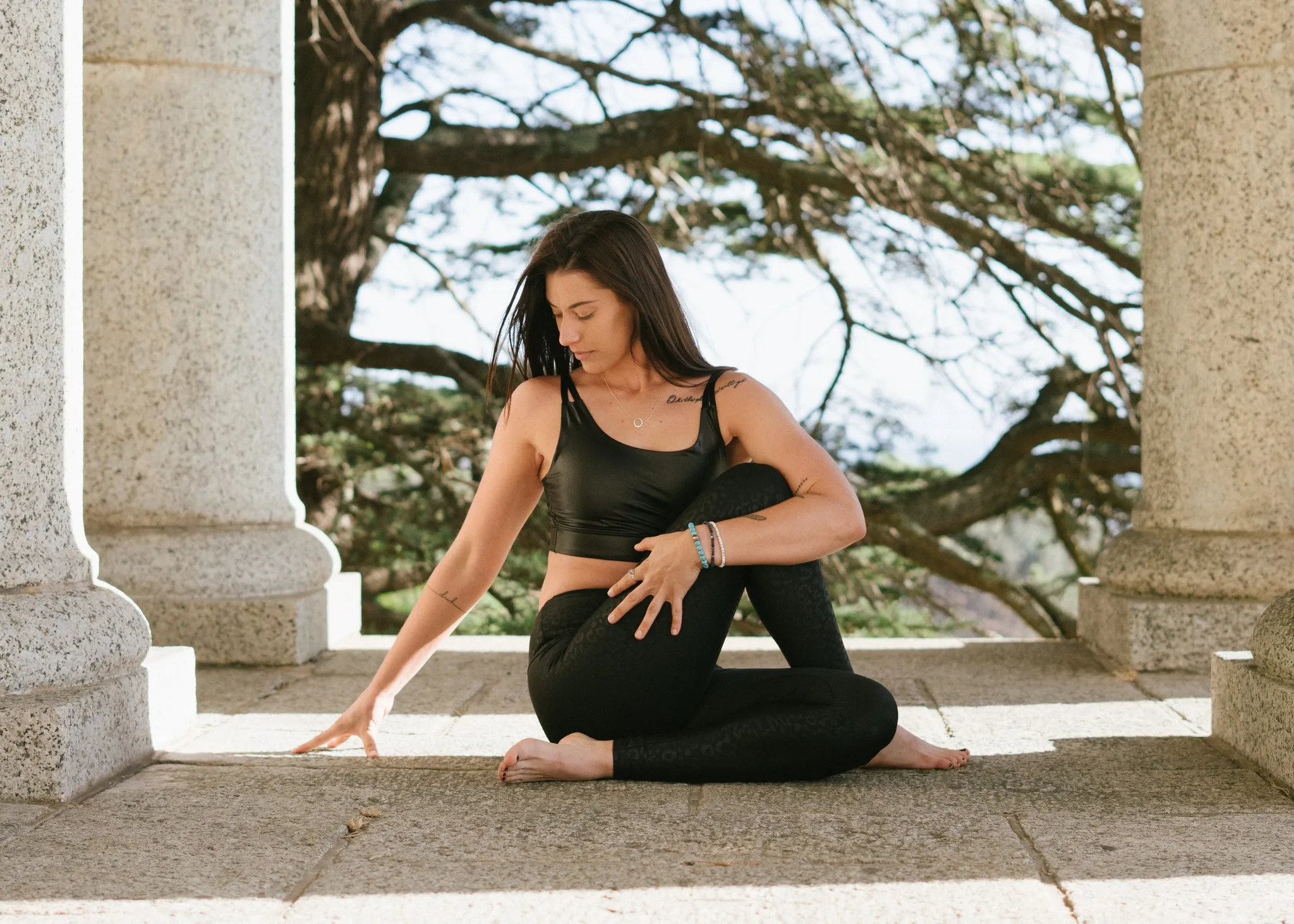
Pain, fatigue, headaches, depression, sleep problems — these are just a few of the wide-ranging symptoms of fibromyalgia. Affecting roughly 4 million people in the United States alone, this disorder causes pain all over the body through a malfunctioning of the nervous system. Science has yet to uncover specific causes for fibromyalgia, and its typically diagnosed in women more than men.
For the 2-4 percent of the population suffering from fibromyalgia, life often revolves around managing the disorder, since the various symptoms can severely disrupt normal daily functioning. There is no cure for fibromyalgia, but regular exercise, stress management, and quality sleep can help. It’s also vitally important that fibromyalgia patients take care of their mental health, since the disorder can cause depression and anxiety.
[inline-CTA-1]
We know that yoga can help strengthen your body, increase your flexibility, and improve your well-being even without a condition like fibromyalgia. But scientists are affirming that yoga can indeed help patients suffering from the symptoms of fibromyalgia and improve their quality of life.
A scientific study in 2020 found that performing yoga on a daily basis for nine months or more can reduce muscle fatigue associated with fibromyalgia and improve sleep patterns. Researchers prescribed a fibromyalgia patient with yoga postures that would strengthen muscles and relieve stress, while increasing flexibility and mobility. Over time, the patient experienced positive results, such as improved sleep, increased energy levels and improved stability. Plus, the yoga therapy was inexpensive in comparison to other treatments.
This wasn’t the only study to find that yoga and meditation can help patients with fibromyalgia. By holistically strengthening the body, increasing flexibility, decreasing inflammation, reducing stress, and improving balance, sleep, and circulation, yoga can counteract the troubling symptoms of fibromyalgia and help patients stay active and present in their lives.
As the numerous studies have confirmed, a routine practice of yoga can help reduce symptoms of fibromyalgia. But it’s important to remember this isn’t a quick fix — regular, long-term practice is key. Yoga is not a cure for fibromyalgia and works best in conjunction with other treatments.
The best types of yoga for fibromyalgia are those that focus on increasing strength and flexibility, reducing stress, and lowering inflammation. Avoid hot or strenuous types of yoga such as Power or Bikram yoga. If you’re not sure if yoga is right for you, consult your doctor before you move forward with yoga therapy.
Begin with the poses below to help reduce your symptoms of fibromyalgia.

This pose is a strengthening yoga posture that improves your stability and helps center your mind and body for the rest of your yoga routine.
Start by standing at the top of your mat with your feet hip distance apart. Balance your weight evenly on both feet. Keep your arms relaxed at your sides, with your spine straight and your chest lifted. Your gaze should be focused straight ahead of you while you breathe easily and gently. Hold the pose for 1-2 minutes.
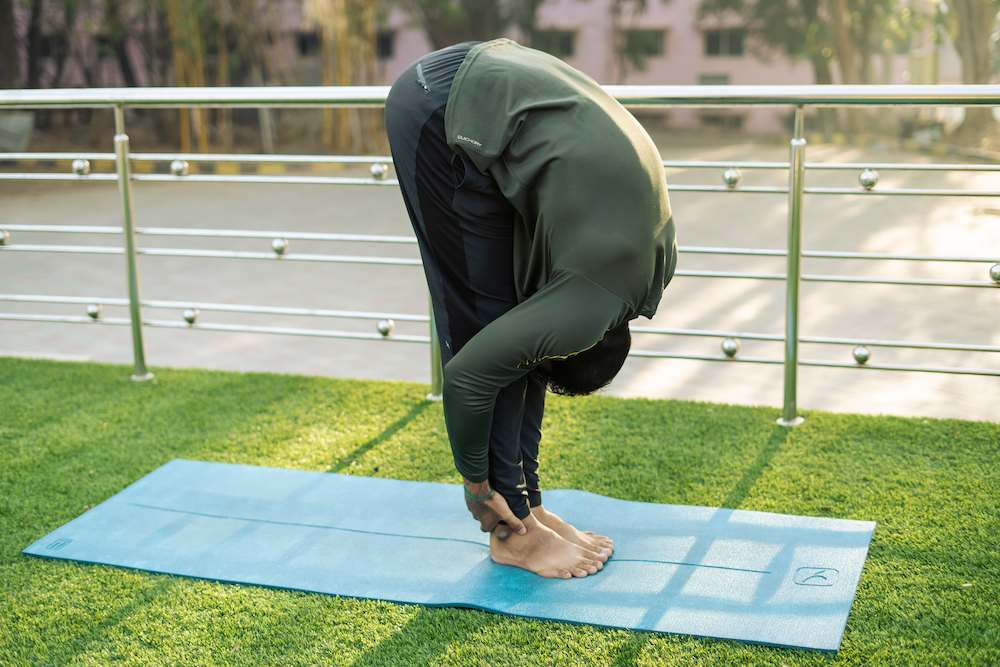
Not only does this pose increase flexibility in your calves, hamstrings, and lower back, but it also decreases stress.
Stand at the front of your mat, feet hip distance apart. Exhale and bend forward from the waist, with your knees slightly bent and touching your hands to the floor in front of your feet. Inhale and exhale, allowing your torso to extend without rounding your back. Lengthen and soften your neck, and let the muscles of your thighs and lower back open and release any built-up tension. Hold the pose for 1-2 minutes.
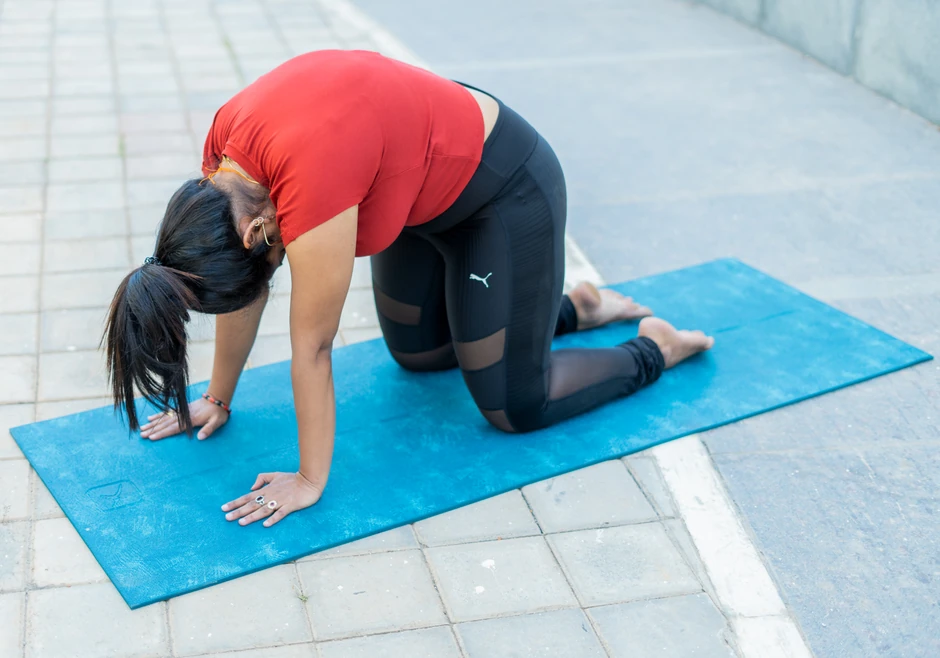
To improve your flexibility and mobility, try practicing Cat Cow on daily basis. This pose can also help relieve tension.
Start with your hands and knees on the floor. Inhale and look up, lifting your chin and gently arching your back. As you exhale, drop your chin and look down toward your naval as you curl your spine forward. Continue this movement 5-10 times.
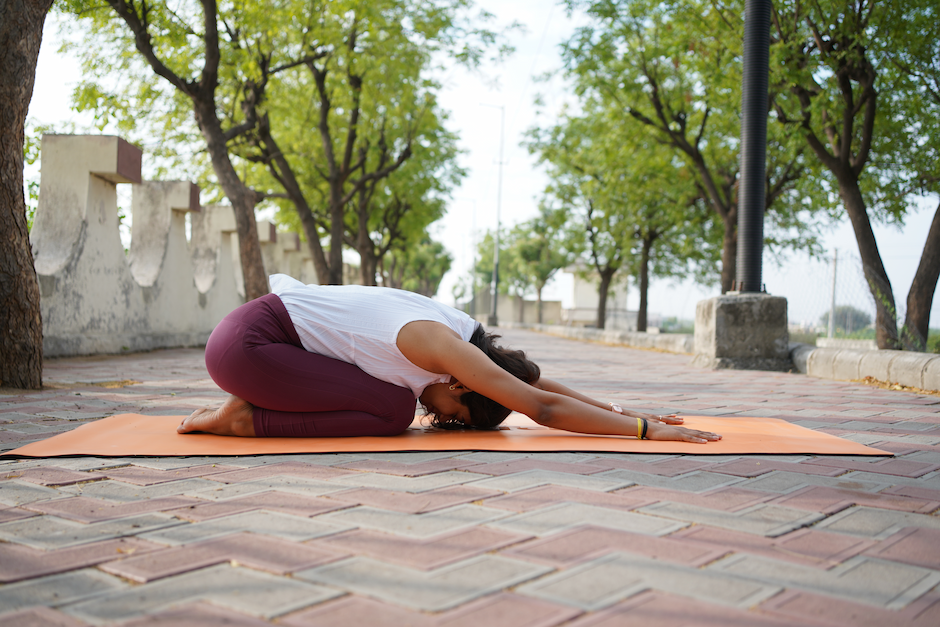
Child’s pose is a calming posture that is effective at reducing stress and inflammation by lowering your blood pressure.
Start on your hands and knees and then lower yourself down so that your backside is resting on your heels, and your big toes are touching each other. Move your hands forward, palms down, so that your forehead is resting on the floor. Allow your spine to lengthen and your neck muscles to fully relax. Breathe deeply and mindfully while staying in this pose for 5-6 minutes.
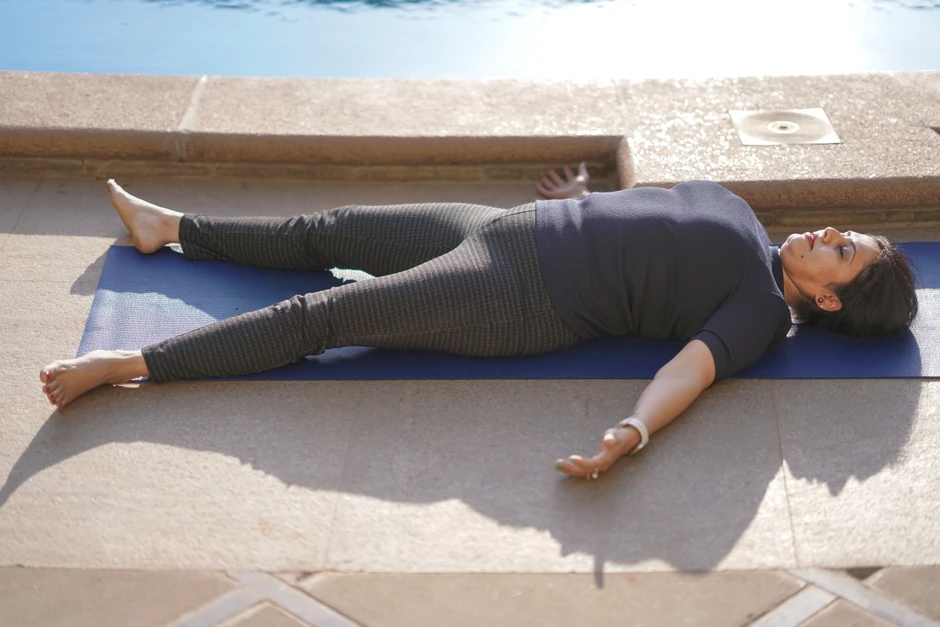
Typically performed at the end of every yoga sequence or class, Corpse pose allows your entire body to relax and destress.
Sit on your yoga mat and lower your body to the floor, relaxing your legs and letting your arms rest on the floor at your sides, palms up. Keep your eyes closed and focus on your breathing. Relax the muscles in your face and neck, and visualize every part of your body letting go of all tension. Hold this pose for 5-7 minutes.
[inline-CTA-2]
Disrupted sleep patterns is just one of the symptoms of fibromyalgia, but calming yoga meditations can help. Specifically, Yoga Nidra — commonly knowns as the “Yoga of Sleep” — can help you unwind and get ready for bed. Regular practice of Yoga Nidra can also improve your sleep patterns over time.
It’s best to practice Yoga Nidra lying down in a comfortable position while listening to a guided meditation. Audio recordings of Yoga Nidra meditations are available for free online, or you can ask a family member to help guide you through the meditation by reading the script below:
Relax and focus on the rise and fall of your own breath. Notice each inhale and exhale, and how your body naturally pauses at the top of your inhale, and for a slightly longer moment at the end of your exhale. Observe this natural rhythm of your breath without controlling or forcing it. Allow any tension to dissolve as you become one with this rhythm.
Once you’ve tuned into your breath, begin a scan of your entire body. Start with your hands, noticing each finger starting with your thumbs. Allow your attention to drift up your arms and to your shoulders, and observe the rise and fall of your chest as you breathe. Give your body permission to relax as you move your attention down your torso to your legs, your knees, your calves, your feet and your toes.
As you continue your scan, gently release any feelings of negativity or judgment. If an area of your body feels tense or resistant to relaxation, gently accept those feelings and continue to move through the rest of your body. Allow any thoughts to float past your awareness and disintegrate as you continue your scan. Finish the meditation by silently expressing gratitude for your body.
For people with fibromyalgia, gentle forms of yoga that focus on slow movements and deep breathing are typically recommended. Restorative yoga, gentle Hatha yoga, and Yin yoga are all great options for people living with fibromyalgia. These types of yoga can help alleviate pain, stiffness, and fatigue, while also promoting relaxation and stress relief.
For chronic pain, restorative yoga and gentle Hatha yoga are two great options. Restorative yoga uses props such as bolsters, blankets, and blocks to support the body in gentle, passive stretches. This can help alleviate pain and reduce stress. Gentle Hatha yoga incorporates slow movements, deep breathing, and mindfulness, which can help reduce pain, increase flexibility, and promote overall well-being.
Yoga is generally considered a safe and beneficial form of exercise for people with fibromyalgia. However, certain types of yoga that involve intense stretching or strenuous movements may aggravate symptoms such as pain and fatigue. It's important to listen to your body and only engage in yoga practices that feel comfortable and safe. Additionally, it's always a good idea to consult with a healthcare professional before starting any new exercise program.
Yes, restorative yoga is a great choice for people with fibromyalgia. Restorative yoga uses props to support the body in gentle, passive stretches, which can help reduce pain, stiffness, and fatigue. The focus on relaxation and stress reduction can also help with symptoms such as anxiety and depression. Restorative yoga is a safe and accessible form of yoga that can be practiced by people of all ages and abilities.

Receive personalized guidance tailored to your unique fitness goals, live with a dedicated coach—no credit card required.